Shanghai
MAGIC CITY
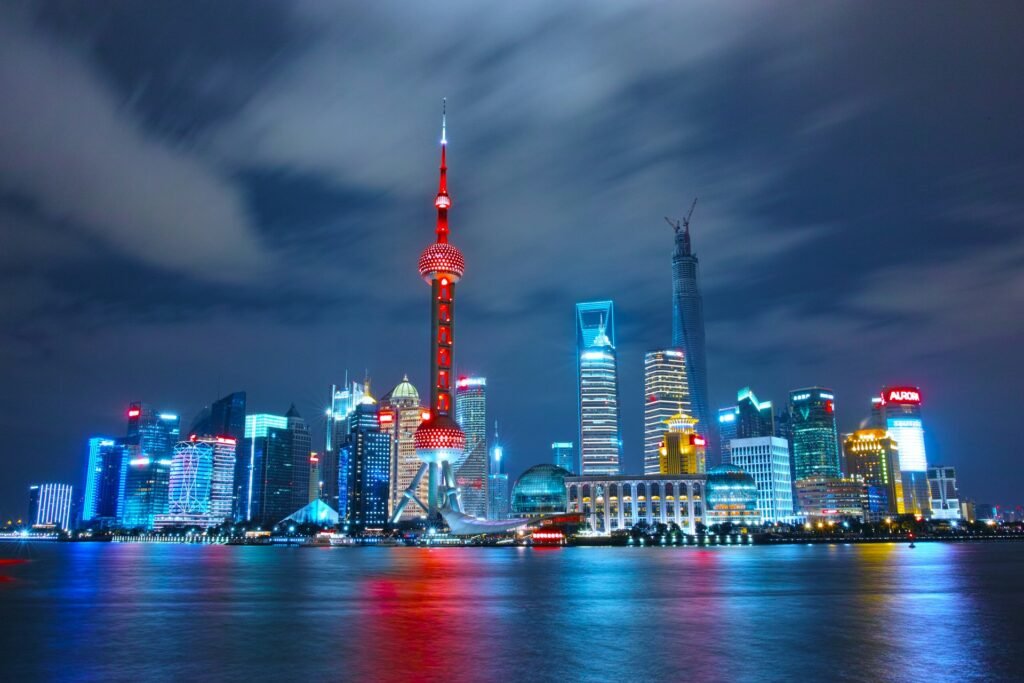
Shanghai, China’s dazzling metropolis, is a whirlwind of towering skyscrapers, ancient temples, and neon-lit streets that pulse with energy. Stroll along the Bund, where colonial-era buildings face off against the futuristic Pudong skyline across the Huangpu River, or lose yourself in the narrow lanes of Tianzifang, brimming with art galleries and tea shops. The city’s seamless blend of East and West hits you at every turn—think dumplings steaming beside craft cocktail bars, or bullet trains zipping past pagodas. It’s a sensory overload in the best way, with a vibe that’s equal parts chaotic and captivating.
It helps keep this site running, and we appreciate your support!
Sightseeing
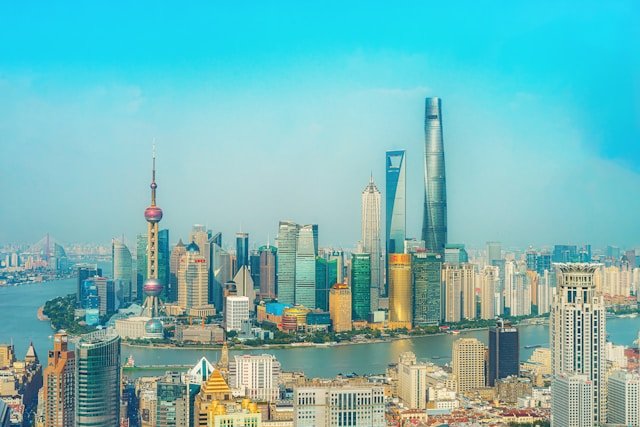
The Bund
Stretching along the Huangpu River, this waterfront promenade is Shanghai’s postcard star, pitting 1920s colonial buildings—think grand banks and customs houses—against Pudong’s neon-lit towers across the water. Sunset turns it into a light show as ferries glide by, and the 1.5-kilometer walkway buzzes with tourists snapping pics and vendors hawking snacks. Nighttime’s the charm, when the skyline glows and the air hums with energy—pair it with a cocktail at a rooftop bar like Vue for the full effect. Mornings are quieter for a reflective stroll, though watch for selfie-stick chaos. It’s Shanghai’s past and future in one frame, a must-see for any visitor.
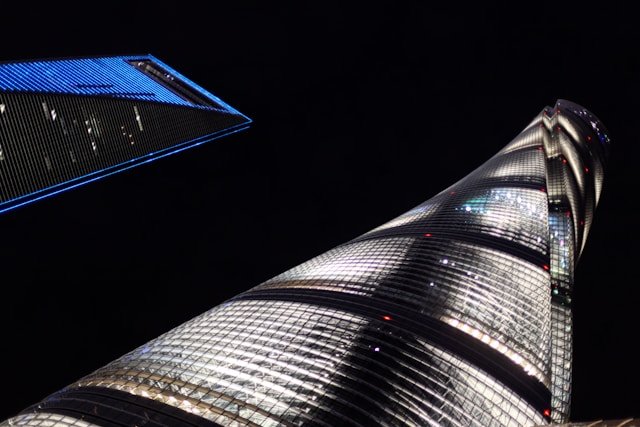
Shanghai Tower
Soaring 632 meters as China’s tallest building, this twisting glass giant in Pudong offers vertigo-inducing views from its 118th-floor observation deck—on clear days, you’ll spot the river snaking through the city’s sprawl. The high-speed elevator (58 seconds to the top!) is a thrill, and exhibits up there detail Shanghai’s urban boom. Tickets run $25, but the 360-degree panorama beats any postcard—bring a camera for the dizzying shots through floor-to-ceiling windows. Fog can cloak the view, so check forecasts and aim for morning clarity. It’s a modern marvel that screams Shanghai’s skyward ambition.

Yu Garden
Tucked in Old Town, this 16th-century Ming Dynasty garden is a pocket of serenity amid Shanghai’s roar, with koi ponds, rockeries, and zigzag bridges dodging evil spirits. The five-acre sprawl includes pavilions and a teahouse (Huxinting) where you can sip longjing tea for $5—pricey but atmospheric. Pair it with the adjacent Yuyuan Bazaar for dumplings and trinkets, though it’s a tourist trap; haggle hard. Spring blooms or autumn reds make it extra picturesque, but crowds peak midday—hit it at opening (8:30 AM) for calm. It’s a historical gem that balances Shanghai’s chaos with classic beauty.
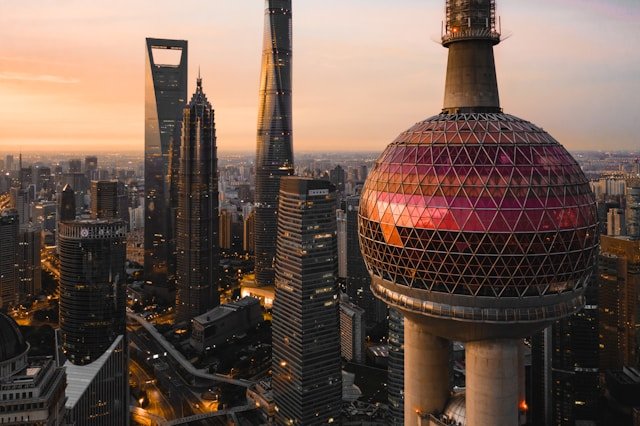
Oriental Pearl Tower
History echoes through the cobblestones of this vibrant square, where Madrid’s past and present collide in a lively symphony—welcome to Plaza Mayor. Encircled by elegant red-brick buildings with wrought-iron balconies, this 17th-century plaza has witnessed everything from royal weddings to bullfights and even public executions. Today, it’s a bustling hub of activity, with outdoor cafés spilling onto the square and street artists adding a splash of color. Grab a calamari sandwich from a nearby vendor and soak in the atmosphere—it’s Madrid at its most authentic.
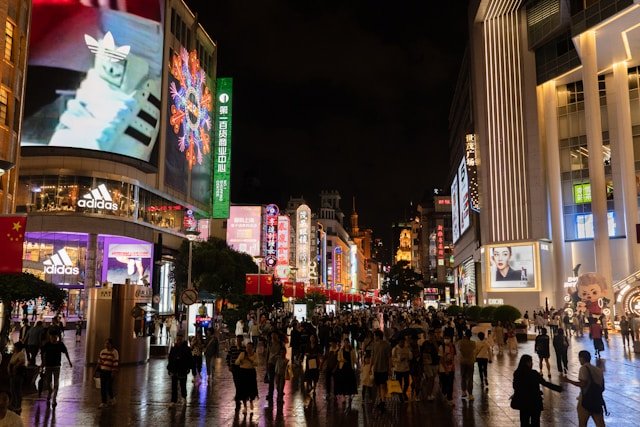
Nanjing Road
Shanghai’s shopping artery, this 5.5-kilometer stretch from the Bund to Jing’an Temple is a neon-soaked frenzy of malls, boutiques, and street eats. East Nanjing Road dazzles with LED signs and flagship stores—think luxury brands and quirky Chinese chains—while West Nanjing Road leans upscale with plazas like Jing’an Kerry Centre. Snack on scallion pancakes or candied hawthorn as you dodge crowds; it’s loud and lively, especially at night. Trams ($1) ease the walk, but side alleys hide quieter gems like tea shops. It’s retail therapy with Shanghai’s pulse, perfect for shopaholics and people-watchers.
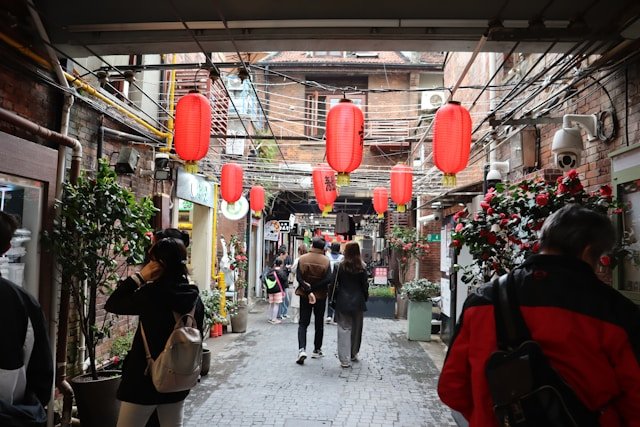
Tianzifang
Hidden in the French Concession, this maze of narrow lanes blends old shikumen houses with artsy cafes, galleries, and boutiques selling handmade jewelry or silk scarves. It’s less polished than Xintiandi, with a bohemian edge—think graffiti walls and craft beer bars next to noodle stalls. Weekends get packed, so mornings let you browse in peace; a $2 baozi (steamed bun) fuels the wander. Photographers love the eclectic vibe, though watch your step on uneven stones. It’s Shanghai’s creative soul, a quirky contrast to the city’s slicker side.
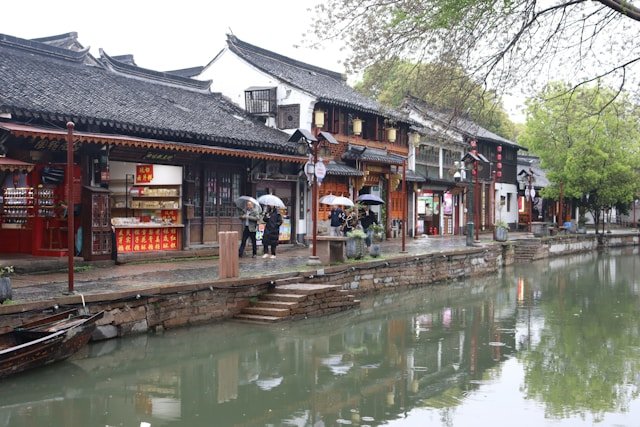
Zhujiajiao Water Town
A 45-minute drive from downtown, this ancient canal town feels like a step back to imperial China, with stone bridges, wooden boats, and Ming-Qing-era homes. A $10 boat ride glides you past willow-lined waterways, while temples like Yuanjin Monastery add spiritual depth—try the vegetarian noodles there. Stalls sell stinky tofu and lotus root candy, but touristy trinkets dominate; skip the overpriced jade. Day trips beat overnight stays—arrive early to avoid bus tours. It’s a charming escape showcasing Shanghai’s rural roots amid urban sprawl.
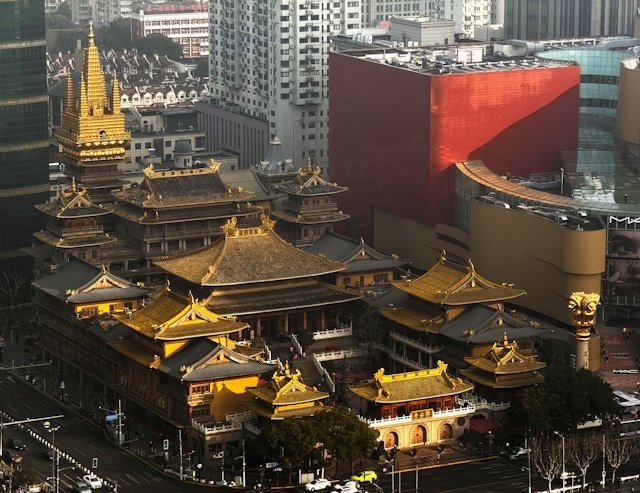
Jing’an Temple
Smack on Nanjing West Road, this Buddhist temple stuns with its gold-roofed halls and a 3.8-meter jade Buddha statue glowing inside. Dating back to 247 AD (rebuilt after a 1980s fire), it’s a living shrine—monks chant as incense swirls, even with skyscrapers looming nearby. The $5 entry includes the silver Guanyin statue and a courtyard where coins rain into a wishing tower. Mornings are less hectic, letting you soak in the calm amid the city’s roar. It’s a spiritual anchor blending Shanghai’s hustle with timeless peace.
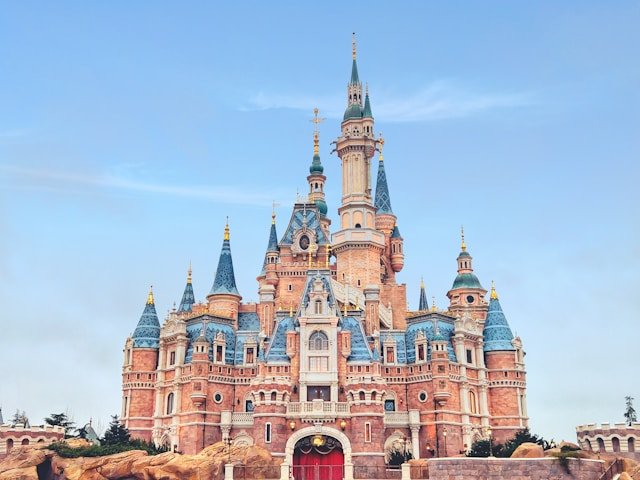
Shanghai Disneyland
In Pudong, this 2016-opened park mixes Disney magic with Chinese flair—think a Tron Lightcycle ride that outpaces Florida’s and a Castle of Magical Dreams lit up in pastel hues. Tickets start at $60, cheaper than U.S. parks, and lines peak midday—hit Pirates of the Caribbean early (it’s next-level here). Food’s a mix of Mickey burgers and Peking duck pizza, with fireworks capping the night. Weekdays dodge school-holiday mobs, and the metro’s Line 11 drops you right there. It’s a family-friendly blast with Shanghai’s bold twist on a classic.
Activities
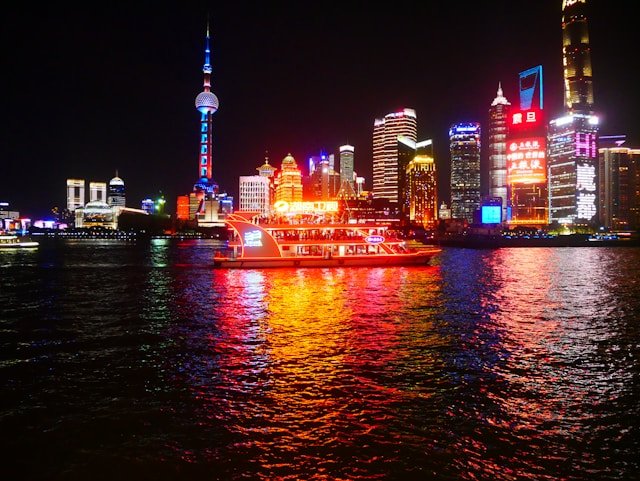
Cruising the Huangpu River
The soul of Spain comes alive with every stomp, strum, and soulful cry in an experience that’s as passionate as it is unforgettable—a flamenco show in Madrid is a must. This traditional art form, born in Andalusia, thrives in the capital’s intimate tablaos, like Torres Bermejas or Corral de la Morería, where dancers, singers, and guitarists weave raw emotion into every performance. The rhythmic clatter of heels against the floor and the haunting melodies pull you into a cultural whirlwind. Pair it with a glass of sangria or a tapas plate, and you’ve got an evening that’s pure Spanish magic.
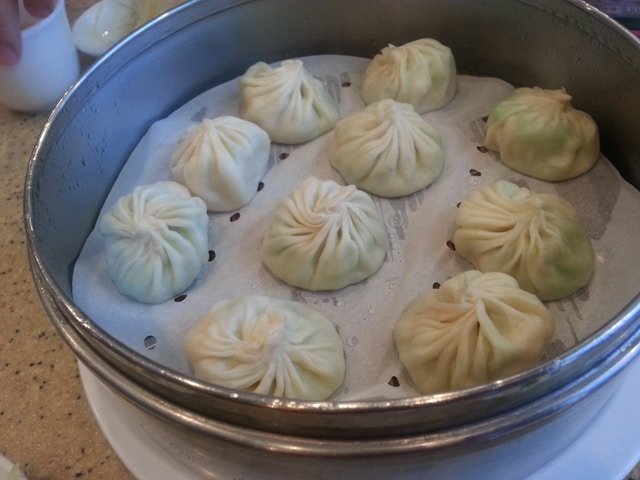
Eating Xiaolongbao at Din Tai Fung
Roars, splashes, and the chatter of exotic creatures fill the air in a sprawling natural haven—Zoo Aquarium Madrid offers a wild adventure in the city. Nestled in the Casa de Campo park, this massive zoo is home to over 500 species, from pandas and giraffes to sharks swimming in its impressive aquarium. The dolphin shows and bird-of-prey demonstrations add a dash of excitement, while shaded paths make it a relaxing outing. It’s a perfect family-friendly spot to connect with nature without leaving Madrid’s orbit.
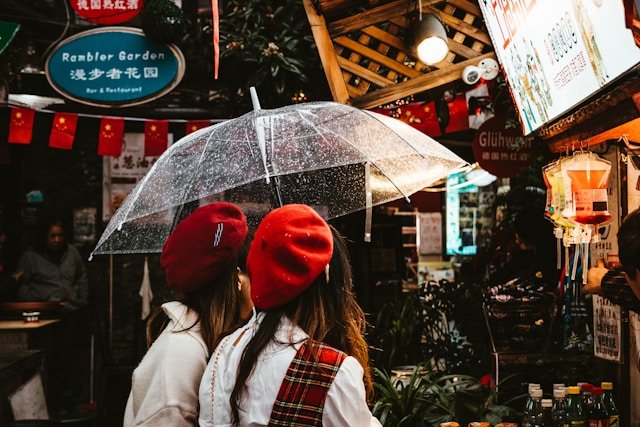
Exploring Tianzifang’s Art Scene
Roars, splashes, and the chatter of exotic creatures fill the air in a sprawling natural haven—Zoo Aquarium Madrid offers a wild adventure in the city. Nestled in the Casa de Campo park, this massive zoo is home to over 500 species, from pandas and giraffes to sharks swimming in its impressive aquarium. The dolphin shows and bird-of-prey demonstrations add a dash of excitement, while shaded paths make it a relaxing outing. It’s a perfect family-friendly spot to connect with nature without leaving Madrid’s orbit.
Flights
Hotels
Steps from Old Town’s Yuyuan Bazaar, this budget chain delivers with its sleek, minimalist rooms and a location that puts Yu Garden and the Bund within a 10-minute walk. Guests cheer the multilingual staff—always ready with metro tips or umbrella loans—and the lobby bar’s cheap beers ($2) for unwinding. Breakfast is a steal, blending xiaolongbao with cereal, and the area’s street food (try $1 pork buns) adds flavor. It’s a reliable, central choice for soaking up Shanghai’s historic and modern mash-up.
Just a short walk from the Bund and East Nanjing Road, this cozy guesthouse charms with its compact, modern rooms decked out with comfy beds and rain showers. Guests love the rooftop terrace for skyline views over a $2 coffee and the staff’s knack for sorting out metro cards or restaurant recs. The lobby’s tea bar adds a homey touch, and you’re minutes from Yu Garden’s dumplings or Pudong’s towers. It’s a steal for its prime spot, perfect for explorers who want Shanghai’s heart without the hefty price tag.
Smack in the city center near People’s Square, this hotel scores big for its spotless rooms and easy access to metro Lines 1, 2, and 8—Nanjing Road’s neon is a 5-minute stroll. Guests rave about the front desk’s warmth, often helping with WeChat Pay setup or printing tickets, and the in-room kettles for late-night tea. A nearby food street dishes $1-3 baozi or noodles, though the hotel’s breakfast (dumplings, eggs) is a solid start. It’s a fuss-free hub for travelers craving Shanghai’s buzz on a dime.
Tucked in the Xintiandi area, this hotel impresses with its spacious rooms—some with kitchenettes—and a pool that’s a rare perk at this price point. Reviewers highlight the staff’s efficiency, quick to share maps or book taxis, and the quiet vibe despite being near French Concession cafes and Tianzifang’s artsy lanes. Breakfast offers a mix of dim sum and toast, and 24-hour convenience stores nearby keep snacks handy. It’s a comfy, well-placed pick for those chasing Shanghai’s chic side with extra amenities.
Essential Tips for Visiting Shanghai
Learning a few phrases like “ni hao” (hello) or “xie xie” (thank you) can smooth your Shanghai trip—locals warm up fast, even if you butcher tones. English is spotty outside hotels and tourist zones, so a translation app like Pleco (offline mode on) is gold for menus or directions. Pointing at maps or pictures works too, and a pocket phrasebook covers gaps. It’s a small win that makes navigating Shanghai’s bustle less daunting.
Shanghai leans hard on mobile payments—WeChat Pay and Alipay rule—but cash (yuan) is key for street food or small shops; ATMs at banks like ICBC take foreign cards, though fees bite. Carry small bills (¥10-50) since change is scarce, and cards work at chains or hotels. Bargaining’s big at markets like Yuyuan—slash prices by 50% and stand firm. Keep cash secure; pickpockets eye busy spots like Nanjing Road.
Respecting Local Norms
Shanghai’s etiquette is subtle but firm—queue patiently (cutting’s a faux pas), keep voices low in public, and don’t tip (it’s not a thing). Hand over money or cards with both hands at shops, a polite nod to tradition. Public smoking’s banned in many spots, so vape discreetly, and avoid loud phone calls on the metro. Watch locals at temples or markets—they’ll clue you into the flow. It’s easy to blend in with a little awareness.
Packing for Shanghai’s Pace
Pack light but versatile—comfy shoes for Nanjing Road’s miles, a portable charger for heavy map use (VPNs drain batteries), and a reusable water bottle (tap’s unsafe, buy bottled). Smog’s a factor, so an N95 mask helps on hazy days; outlets are 220V (Type A/C/I plugs), so bring adapters. Toss in a small umbrella for drizzles and space for silk or tea buys. Shanghai’s fast—gear up to match it.
Savoring Shanghai Cuisine
Diving into Shanghai’s food means saying yes to xiaolongbao, red-braised pork, and hairy crab (fall’s the season)—street stalls dish $1-3 bites, while restaurants like Yang’s Fry Dumpling hit $5-10. Chopsticks are king; practice or ask for a fork, no shame. Spicy’s rare here—flavors lean sweet-salty—and communal dishes rule, so share with gusto. Hit busy spots for freshness; a queue means quality. It’s a tasty crash course in China’s culinary capital.
Shanghai Transportation Guide
Finding the Best Time to Visit
Landing in Shanghai during these months brings mild days (55-75°F, 13-24°C) and cherry blossoms popping at Yu Garden or Zhongshan Park—April’s peak is Instagram gold. Humidity’s low, perfect for strolling the Bund or Tianzifang, though light showers hit—pack an umbrella. Crowds swell for Qingming Festival (early April), so book hotels early; rates climb 20-30%. Smog can blur skylines, but clear days show off Pudong’s gleam. It’s a sweet spot for comfy exploring with Shanghai’s floral charm.
Hitting Shanghai in fall means golden ginkgo trees along the French Concession and cool, dry air (55-75°F, 13-24°C)—October’s the bullseye for Nanjing Road walks or Zhujiajiao trips. National Day (Oct 1-7) spikes crowds and prices—avoid unless you love chaos—but late fall thins out, slashing hotel costs. Autumn hairy crab season is a foodie draw; pair it with rooftop views. It’s Shanghai’s coziest, clearest window, ideal for urban adventurers.
Summer’s Sticky Buzz (June to August)
Diving into Shanghai then means steamy heat (80-95°F, 27-35°C) and monsoon rains—July’s the wettest, so indoor spots like Shanghai Museum or Xintiandi shine. Humidity’s a slog, but crowds thin outside holidays (Dragon Boat Festival, June), and hotel deals pop up—think 20% off near Jing’an. Nightlife on the Bund or in bars like Flask hums, and cheap iced teas keep you cool. It’s a sweaty, budget-friendly bet for those who thrive in Shanghai’s summer pulse.
Winter’s Quiet Chill (December to February)
Touching down in winter wraps you in Shanghai’s frosty side—temps dip to 35-50°F (2-10°C), and the Bund’s crisp air pairs with hot dumplings. Chinese New Year (late Jan/Feb) brings fireworks and chaos—book way ahead—but off-peak weeks mean empty attractions and 30-50% off hotels. Smog’s worse, so masks help; snow’s rare but magical when it sticks. It’s a low-cost, low-crowd gem for travelers who dig Shanghai’s stark, urban winter vibe.
